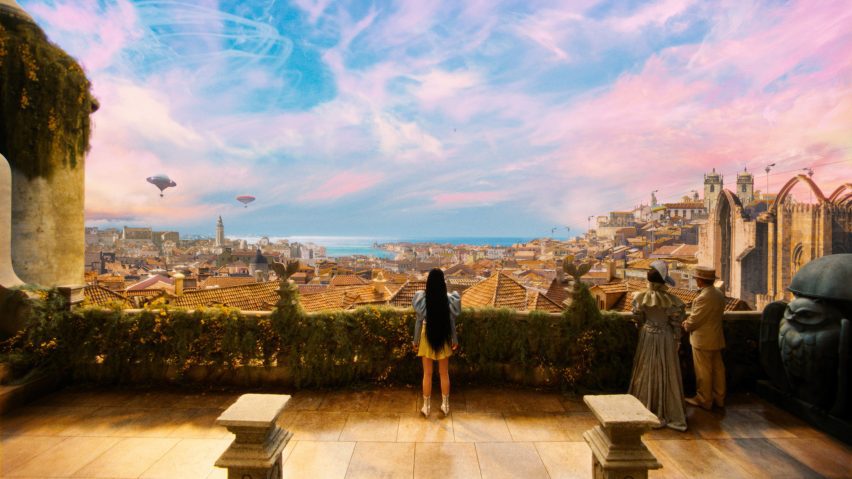
Shona Heath and James Price "spliced up" architecture for Poor Things sets
The Oscar-nominated set design for Poor Things aimed to create a "1930s studio movie with today's technology", the film's production designers have told Dezeen.
Directed by Yorgos Lanthimos, Poor Things tells the story of Bella, played by Emma Stone, who has a child's mind trapped in a grown woman's body – a plotline that affected how the sets for the black comedy were designed.
"The script dictated our way into the world we were trying to make, and the first way in was to work out how Bella lived," said Shona Heath, who co-created the film's production design with James Price.
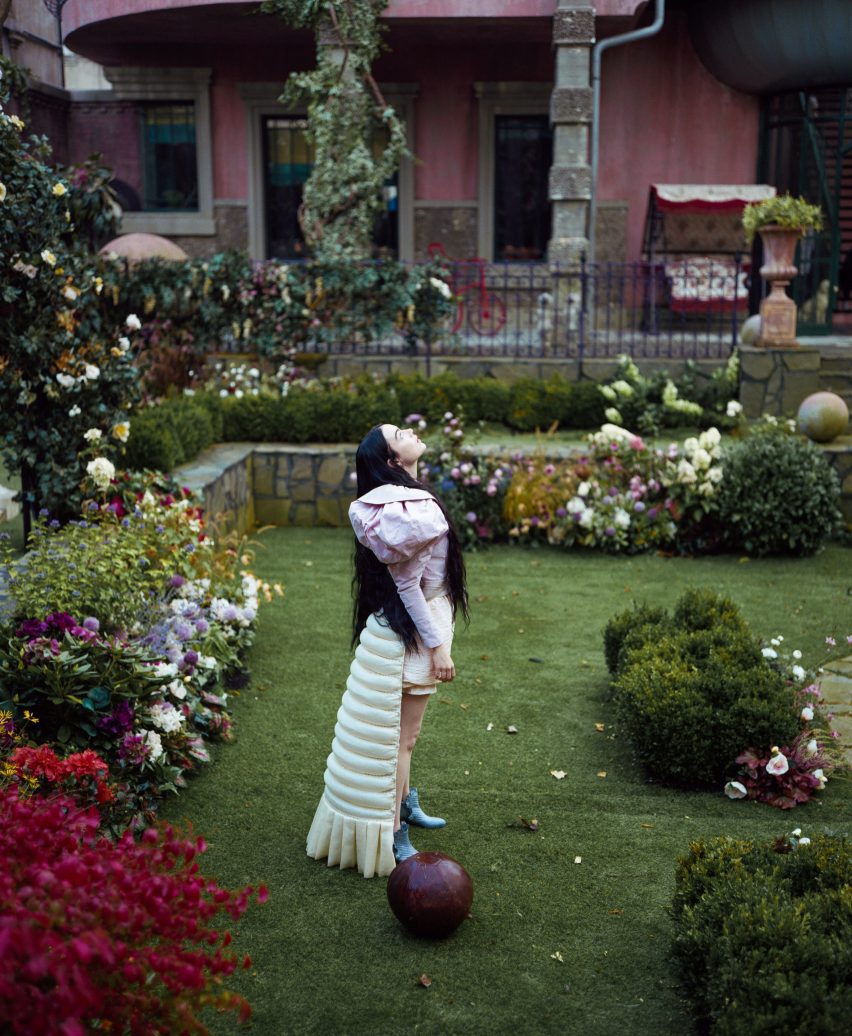
"Her interior world would have been created by [her father] Godwin Baxter," she told Dezeen. "And he was a maverick doctor, a very precise and artistic man, who had fine taste and was an artist in his way."
Ninety per cent of the action in the film takes place on large sets in Budapest, where the film was shot, with only a small part of it filmed in existing locations.
To create the interior for Bella's home – built as large sets – Heath and Price took inspiration from the neo-classical Sir John Soanes Museum in London, which is filled with paintings, antiques and artworks collected by its owner in the 19th century.

Playing with contrasts and different textures, they also focused on "splicing up" the architecture in a similar way to how the doctor, played by Willem Dafoe, splices up animals and other subjects.
"Art and very decorative surfaces suddenly had a very flat side to them," Heath explained. "Or a heavy, textured wall was contrasted with a very sleek staircase, that sort of approach."
"Bella's room was also led by the fact that Baxter would have prepared it to house this dangerous toddler in a huge body, so he padded the room so she couldn't hurt herself," she added.
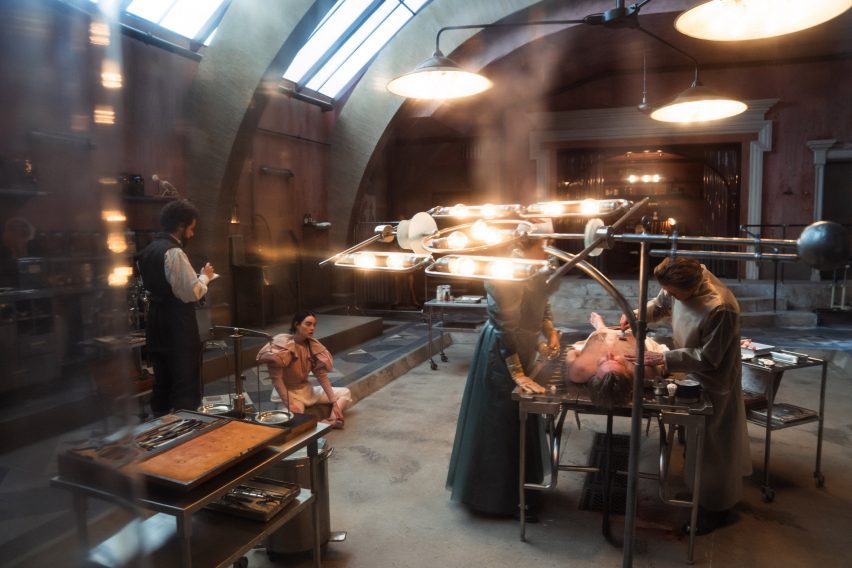
The duo thought extensively about the texture of the sets at the request of the director who, without their knowledge, shot parts of the film in black and white.
"[Lanthimos] was super keen on huge texture," Heath said. "Whatever ever we were doing, he said to make it thicker, deeper, more of it, more texture."
"He wouldn't be specific about colour but I think the texture was what he knew would read well in black and white."
While the first act is mainly set within Bella's home and the operating theatre where Baxter makes hybrid animals – including a dog-chicken creature and a goat with the head of a duck – the film quickly moves on to depict Bella's journey out into the world.
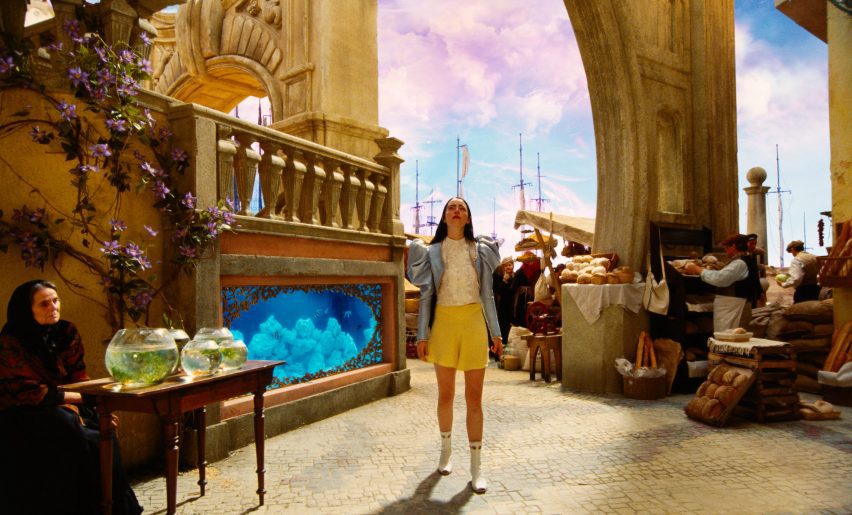
For these scenes, which take up most of the film, Heath and Price created a colourful set design that underlines the difference between Bella's black-and-white upbringing and her coming-of-age experiences.
The designers used a mix of architectural references for the sets in Lisbon, the first city Bella visits.
"We looked for the fantastical in architecture wherever it would be and we had a massive library of architectural details," Price said.
"We knew that we wanted it to feel like a real city in the sense that nothing was uniform," he added. "That's sometimes a problem with built sets; there's a uniformity because that's quick to do but I think we managed to avoid that with our set builds."
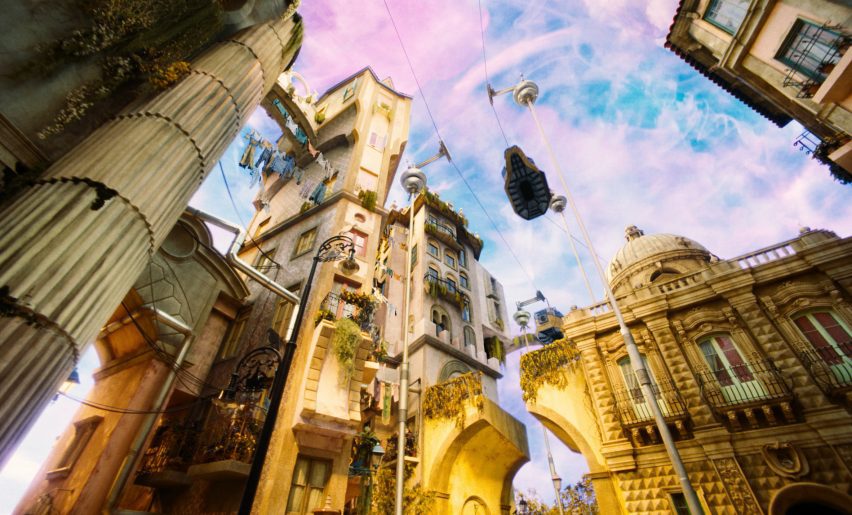
Some of the architectural references used for Lisbon were "quite modern", according to Price, who named the work of Spanish architect Ricardo Bofill as an example.
"For Lisbon, we combined modernist architecture with very medieval architecture," he said.
"And added lots of mythical creatures," Heath interjected. "We also put in owls and dolphins." These are accompanied by maritime and nautical motifs, including fish and mermaids.
One of the film's most important sets, in terms of impact on the story and dwell time in the film, was the brothel in Poor Things' version of Paris.
The heavily ornamented baroque-style building features phallic windows and other details that hint at its use.
"[Its design] came from the script and it's a comedic moment where Bella looks around and goes to what she thinks is possibly the idea of a hotel," Heath said. "But how would she know – she hasn't been in hotels."
"She's not off put by a huge penis and carvings of two naked women, there's nothing that rings alarm bells or that she's fearful of. It was just a moment of humour that we thought could be in the set."
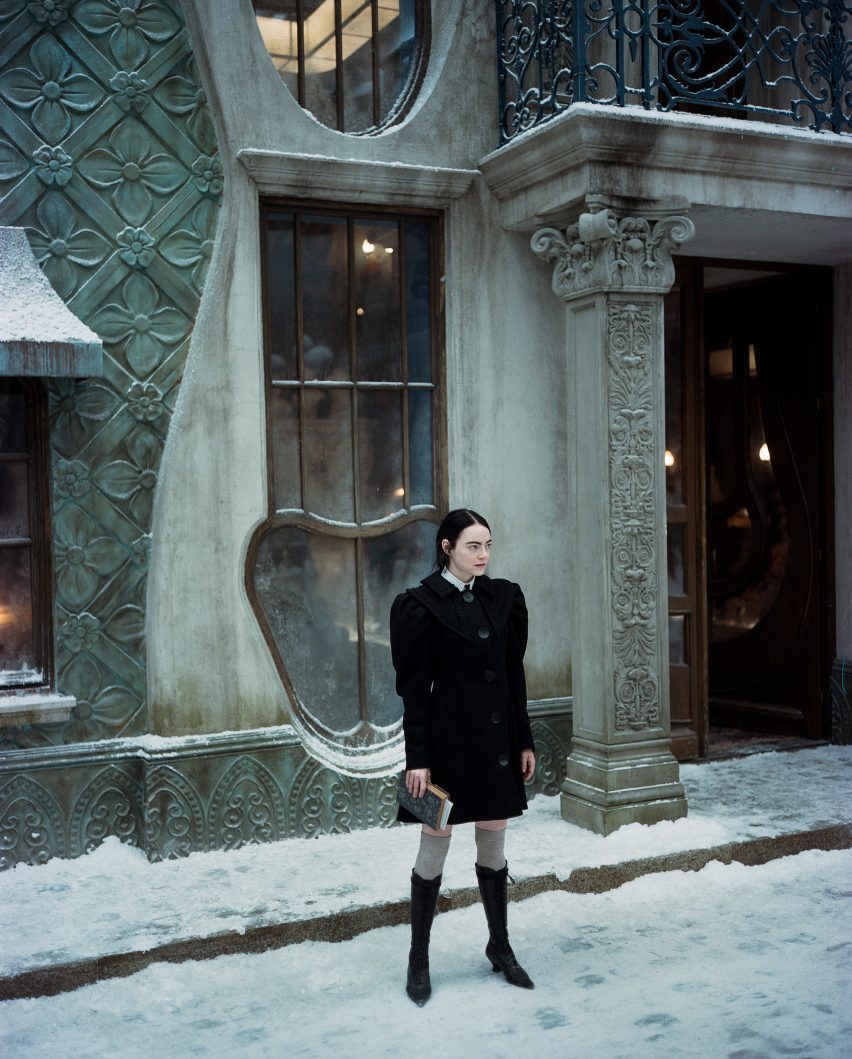
While viewers spend less time with Bella in Alexandria, the set of the city – built as a large miniature rather than a full-size location – needed to underline an important plot point and give a condensed overview of an entire city.
"One of the ancient wonders of the world was the Alexandrian lighthouse," Price said. "[The set] is a bit of a play on that and the idea of people in their ivory towers."
To create the city, which is depicted as an island in the ocean rather than a city on the coast of North Africa, the designers also drew on a book about antique carvings called Cabinet of Curiosities.
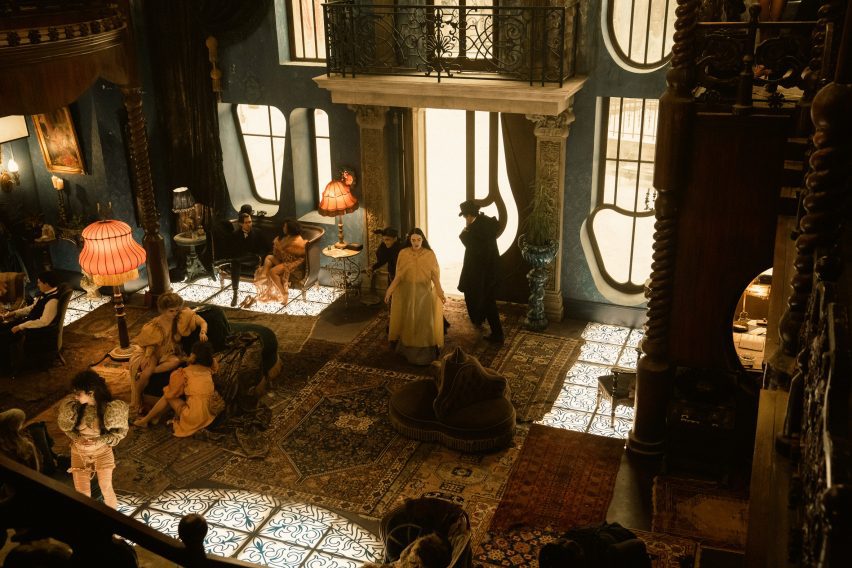
"They were beautiful ivory, I think 15th-century, carvings that looked like Star Wars towers or like Escher drew them," Heath said. "They're insanely modernist, but from way back."
"We used them as inspiration along with the idea of the ivory tower – we were having a lot of fun with wordplay. And like with Lisbon, we had to distil a lot of information into a really small place that could be seen in an overview."
The first scene in Alexandria is one of the few that was shot in an existing location – a restaurant the designers transformed into a breakfast room that resembles an "almost a pseudo Bond villain lair". From here, the movie moves on to show the slums below the tower.
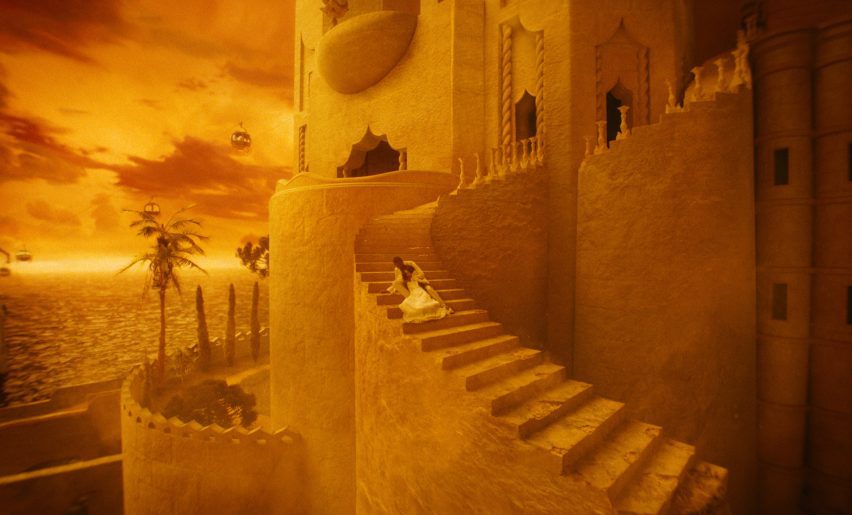
"In the slums, we also used the Garden of Earthly Delights by Hieronymous Bosch – elements of the architecture we took from details within that painting," Heath said.
"There's a depiction of hell within it that is a craggy opening down into a fiery pit and that's why we wanted the whole of Alexandria to almost become this fiery, blood-red sandstone."
For the overall feel of Poor Things, Lathimos wanted Heath and Price to create a "1930s studio movie with today's technology".
"If we did that, we would create a new aesthetic," Price said. "It's not like making a pastiche of a 1930s movie; we're not trying to make it look like it was made in the 30s, but making it like it would be made now."
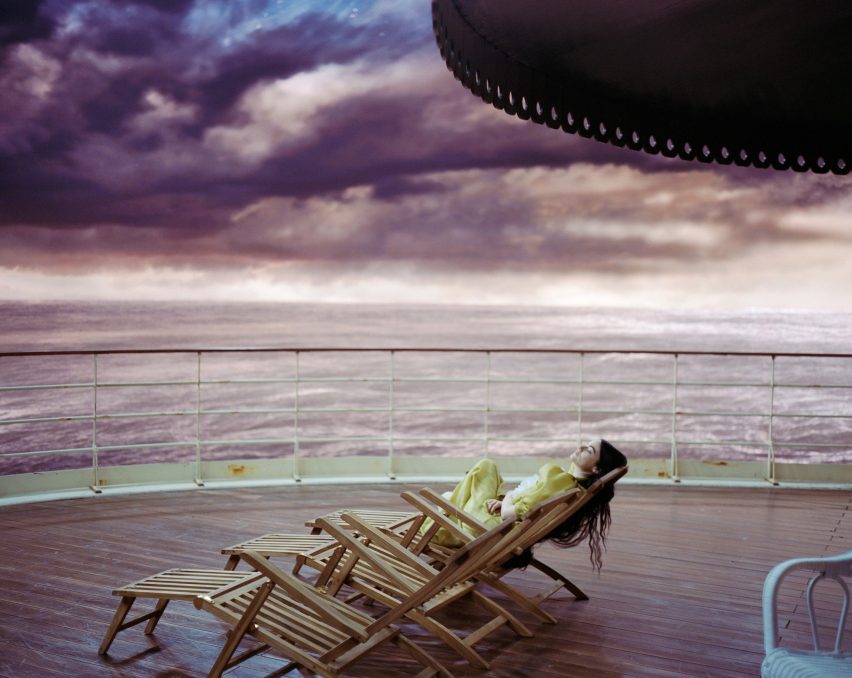
The two designers have received an Oscar nomination for their production design together with Zsuzsa Mihalek, who was responsible for the set decorations.
The 96th Academy Awards, or Oscars, take place on 10 March 2024 and honour films released in 2023.
"We've got such a wonderful film to talk about and I really appreciate that," Heath said of being nominated. "It could be a depressing film about death, but there is something celebratory about it and everybody's together, so it feels amazing for James and me."
"It's such a complete film and it's been quite wonderful to be able to talk about it," Price added. "The love that people have for it speaks volumes."
Other recent films and TV series with impressive sets include Killers of the Flower Moon, for which its designers built a railway station from scratch, and Asteroid City, which was built as a fully functioning town complete with sewers.
The photography is courtesy of Searchlight Pictures.